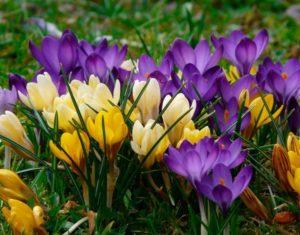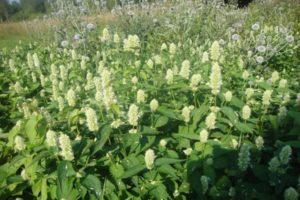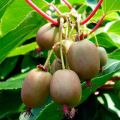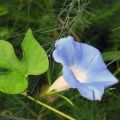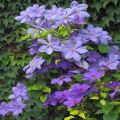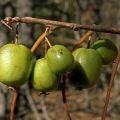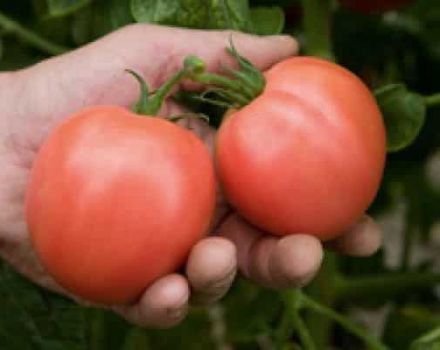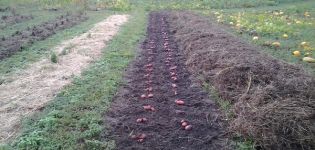Planting and caring for a kobe in the open field, growing from seeds and how to save
An annual tropical liana shrub is used in the backyards and dachas of Russian gardeners for landscaping gazebos and creating hedges. Kobeya grows rapidly, covering vertical structures with greenery. Flowers in the form of large double bells enchant with their sophistication and beauty. How to plant kobei in the open field correctly and what elements of care to pay attention to, every gardener should know.
Description and features
A tropical flower, under the right growing conditions, feels great in our climate.
Description and features of the plant:
- Rapid growth rate.
- Powerful branched root system.
- The presence of antennae on the stems.
- Large bell-shaped flowers with long stamens and pistils.
- The fruit is a capsule with rounded seeds.
Naturally grows in the tropical forests of South America and Mexico. Cultivated since the end of the 18th century. The popular name is Mexican ivy.
Growing
The main difficulty in growing is the relatively poor germination of seeds. The seed coat is very thick and dense; it is difficult for the sprout to hatch through the crust. Presowing seed preparation is mandatory.
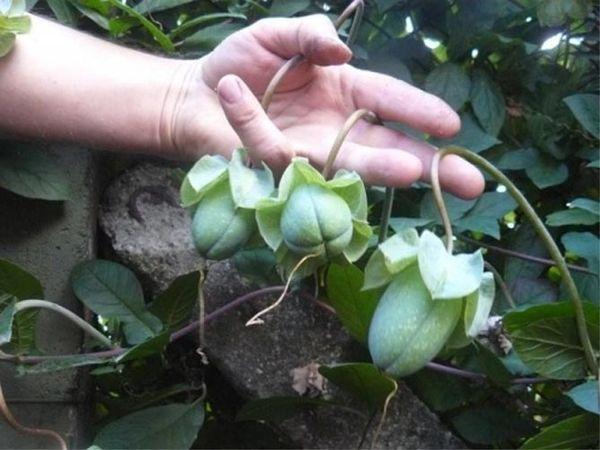
Seed preparation
The purpose of pre-sowing preparation is to get rid of the thick seed coat, dissolve the crust to a mucus-like state. Material preparation stages:
- The seeds are laid out on the bottom of the container and filled with warm water.
- After 2 hours, they will be covered with mucus, which must be cleaned off.
- Then the seeds are soaked again.
- Repeat the procedure several times until the seed is completely clear.
Note: Seed germination averages about 40%. Seedlings appear after a long time, after about 3 weeks.
Timing
Sowing seeds for seedlings is done in early spring or late February. The growing period of the material is long, it is not recommended to prolong the planting season.

Soil preparation
The soil for the kobei should be nutritious and loose, the addition of sand is permissible.Before sowing seeds, the soil must be disinfected with a solution of potassium permanganate or scalded with boiling water as a prevention of fungal and bacterial diseases.
How to plant seedlings
When grown for seedlings, Kobei is planted immediately in individual cups. The flat side of the seed is laid down on the ground, then the future sprout is sprinkled with earth to a depth of no more than 1 centimeter.
Picking
At the age of three true leaves, kobei seedlings dive. The sprouts are carefully removed from the cups and transplanted into 3 liter pots. The roots of the tropical vine are strong and well formed. Relocating plants to larger containers promotes the formation of a stronger stem.
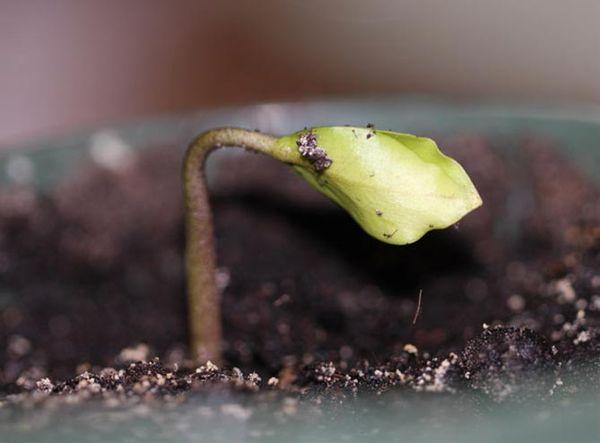
Support
After a dive, additional devices are installed in each pot in the form of a ladder, which will be a support for the future liana.
Hardening
For better acclimatization and survival of plants in the open field, they are hardened after planting. Around the third decade of April, seedlings can be displayed on a balcony or glazed veranda. Under favorable weather conditions, the seedling containers can be left outdoors until disembarking.
Landing in open ground
Kobea is a thermophilic tropical plant, you should not rush to plant the creepers in unprotected soil, but at the same time, excessive stretching of seedlings should not be allowed.
When to plant
As soon as the threat of spring frosts has passed, and the soil temperature reaches a stable level of +10 The plant is planted in a permanent place in open ground. As a rule, this is the end of May - beginning of June.

Seat selection
The main requirement of the kobei to the place of growth is the absence of drafts and strong winds on the site. The soil must be nutritious, drought is unacceptable. The illumination of the site is above average, although Mexican ivy is also grown in places with partial shade.
Landing scheme
The kobei is planted in the landing holes, which are prepared in advance. The depth of such depressions is 30-40 centimeters; a mixture of humus and sand is placed on the bottom. The distance between the holes is kept about 1 meter. The holes are watered and the bush is planted.
It is necessary to install a support for the young creeper on the day of disembarkation. To grow a powerful stem and create dense thickets, the plant needs it.
Care
Kobeya is demanding on growing conditions. To achieve complete foliage coverage and tropical liana flowering, systematic care is required.
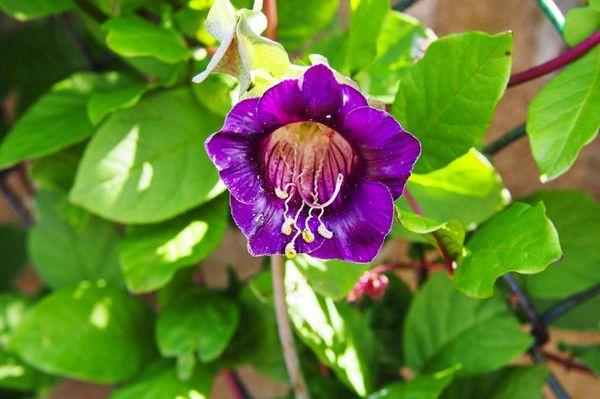
Watering
Mexican ivy does not tolerate drought well. Do not overdry the soil. Regular watering is required. Irrigation is carried out with warm water under the root of the plant. But you should not get carried away with watering, excess moisture leads to the occurrence of various types of fungal diseases.
Top dressing
The main necessary fertilizers for kobei are fertilizers containing nitrogen. As soon as the plant has gained a sufficient amount of foliage and stretched out in length, potash and phosphorus fertilizers must be applied during the budding period.
Note: From folk recipes, it is recommended to water the vines with infusion of bird droppings or mullein 2-3 times per season. The introduction of humate and other organic dressings is encouraged.
Loosening and weeding
Removing weeds, regularly loosening are mandatory procedures, after which the bushes can be sprinkled with a mixture of humus, wood ash and sand.
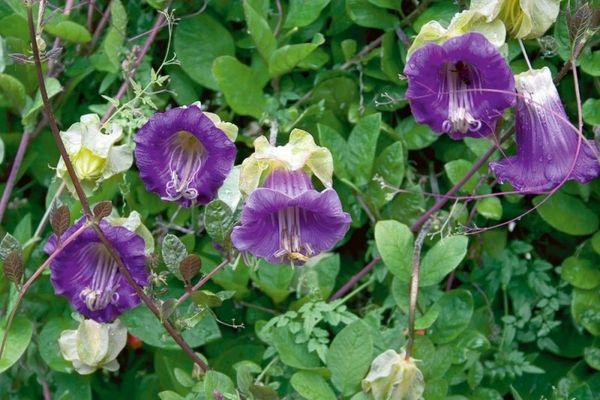
Diseases and pests
The main enemies of the tropical liana are aphid colonies and spider mites. In case of severe infection, plants are treated with insecticides: Iskra, Aktara, Fitoverm. For prevention, mustard powder and wood ash are used, you can use Bordeaux liquid.
Lash formation
The bush begins to form immediately after transplanting into open ground. The plant is tied to supports in the form of ladders, nets or pegs.The growth rate of the vine is fast, it is necessary to tie up the bush regularly throughout the season. To form beautiful lashes, the plant is pinched, the excess shoots are removed.
Reproduction
Breeding kobei involves two ways: seed or seedling, as well as cuttings. You can not reproduce lianas by dividing the bush.
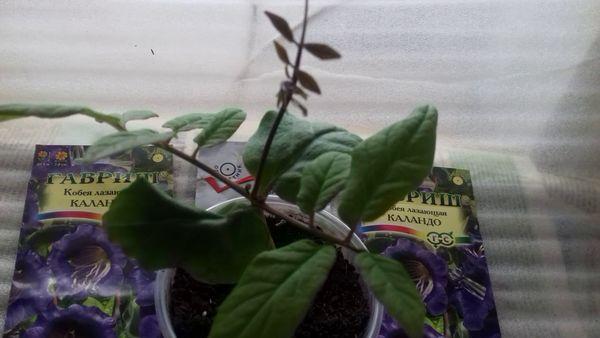
Seeds
The main breeding method for Mexican ivy. The seeds are pre-sowing treatment, the hard shell is removed or softened to improve the quality of seedlings. Such plants bloom longer and get sick less.
Cuttings
Cuttings for cuttings are obtained from adult plants that have overwintered in warm conditions of protected ground. Cutting of cuttings begins in early spring. A twig is formed no more than 20 centimeters long, placed in water until the roots appear, then the plant is planted in an individual pot, in which it develops for 3-4 weeks. Next, the vine is transplanted to a permanent place.
After flowering
The flowering period of the tropical liana lasts until late autumn. Further, the kobei bushes are removed, since in Russia, Mexican ivy is grown as an annual plant.
Collection and storage of seeds
Seeds of our own production, collected on time and stored at the correct temperature, humidity and light, have an extremely low germination rate. It is recommended that you purchase kobei seeds from a specialty store.
Preparing for winter
In late autumn, the bush is dug up and removed. In the Russian climate, the plant lives only one season. Advanced gardeners, in order to preserve the vine, root some of the shoots of adult plants for the winter and grow them at home until the spring of next year.
Popular varieties
The varietal variety of kobei is not very extensive. As a rule, growers grow one or two of their favorite varieties of climbing tropical vines. When choosing a variety, it is necessary to take into account the natural and climatic conditions of the region where it is planned to grow the liana.
Purple
Proven variety for vertical landscaping. Reaches a length of 4-5 meters. The advantageous advantage of the variety is its large bell flowers, rich in bright purple color.
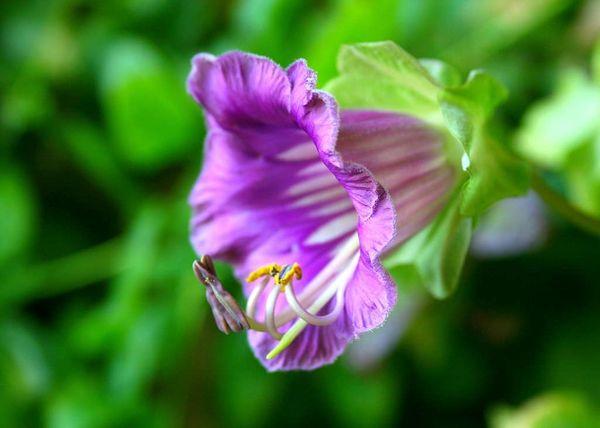
White
Ideal for hedges, gazebos and balconies. Spectacular white flowers will create a delicate look for vacation spots. Liana reaches a height of 4 meters.
The Tsar Bell
Differs in the shape of white bells with a small collar. The diameter of the flowers is 8 centimeters. Blooms before the onset of the first frost. The length of the lashes is 3 meters.
Amazon
Spectacular purple bells cover the entire liana during the flowering period. Forms many shoots. The length of the vine is 4 meters. Suitable for creating hedges.

Balcony landing rules
Two methods are used for landscaping balconies:
- Liana is lowered from the pots according to the "top-down" principle.
- The supports are pulled "from the bottom up" from the ground to the balcony railings.
In this case, it is necessary to select varieties depending on the purpose of growing and landscaping. Regular watering of plants is important, it is advisable to use deep containers.
Use in landscape design
Kobeya is an irreplaceable plant used in landscape design for landscaping vertical surfaces. The long flowering period and the original shape of the flowers are the advantageous advantages of the tropical vine.
Hedges
To create hedges, kobei lashes are formed on nets or ladder supports. A tropical liana is able to completely tighten the fence with dense foliage and decorate the fence with spectacular flowers.
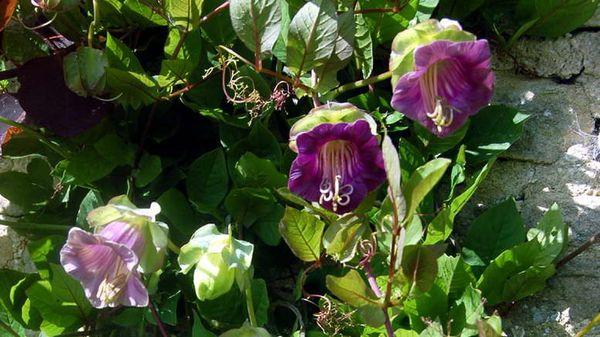
Arches
You can decorate the entrance to the garden or recreation area by creating flowering kobei arches. Finished arch supports can be purchased at specialized stores.It is enough to plant 2 bushes of Mexican ivy on the left and right sides of the arch. Further, the flower will cling to the support with its antennae and will soon cover the arch with completely dense foliage.
Balconies
You can grow a kobei on balconies, planting bushes in deep boxes and lowering the branches down. In this case, no supports are used. Regular watering is important. The plant reacts extremely negatively to dry soil and drought.
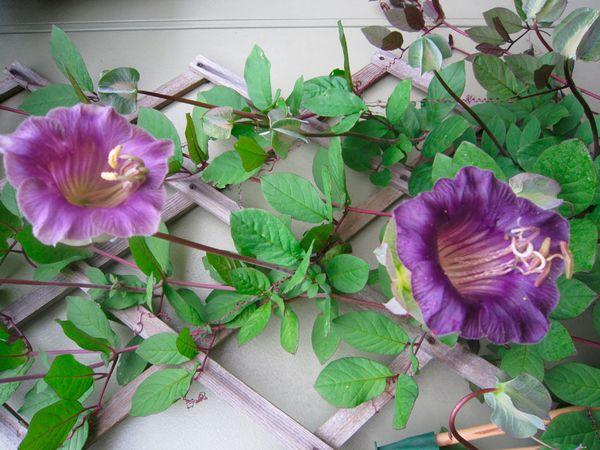
Gazebos
Landscaping of gazebos with thickets of kobe is a favorite technique of landscape designers. The plant completely covers vertical surfaces, blooms profusely and for a long time. Tropical liana, although demanding on light, can grow in partial shade conditions.
You can decorate a gazebo on your personal plot with a living curtain of beautiful flowers using kobei. The tropical liana will look great when landscaping balconies and terraces. The appearance of the plant is unforgettable, the grown liana will perfectly complement the recreation area and create a pleasant shade in your favorite gazebo.
